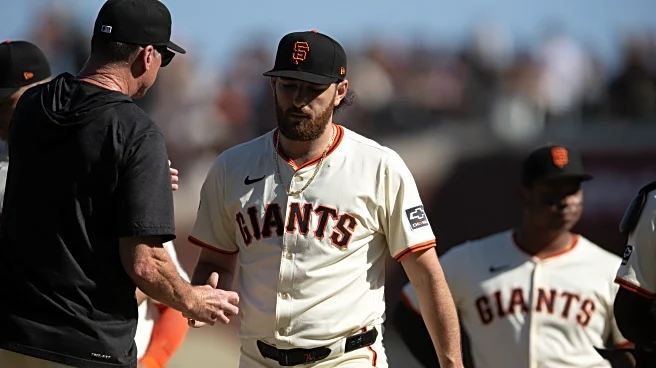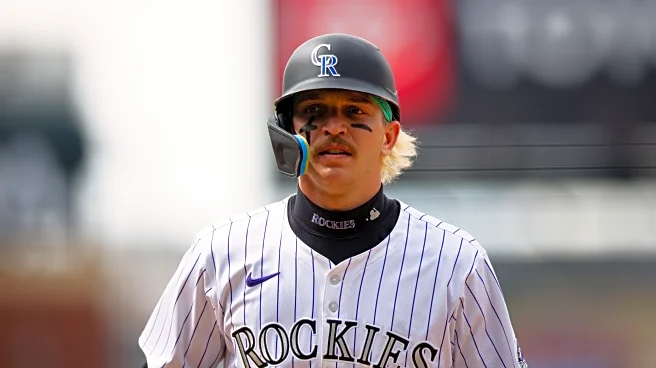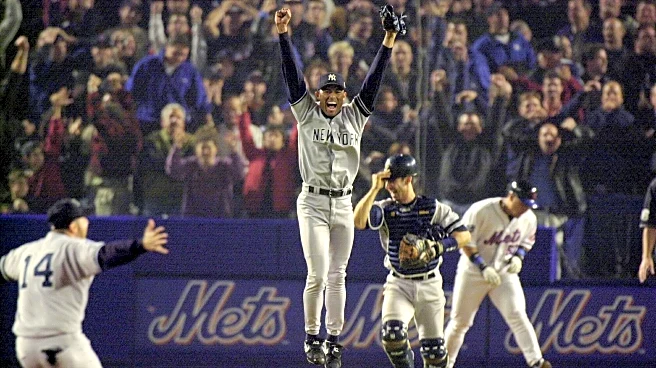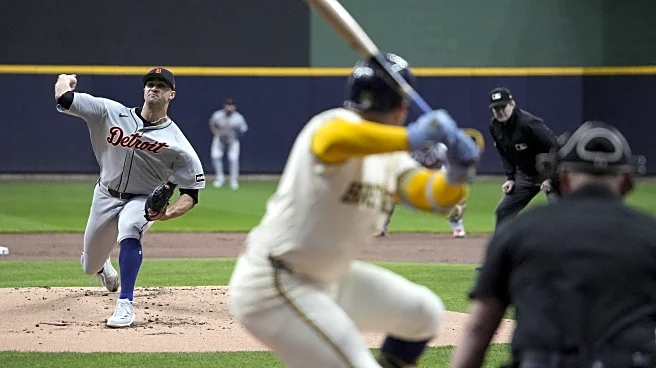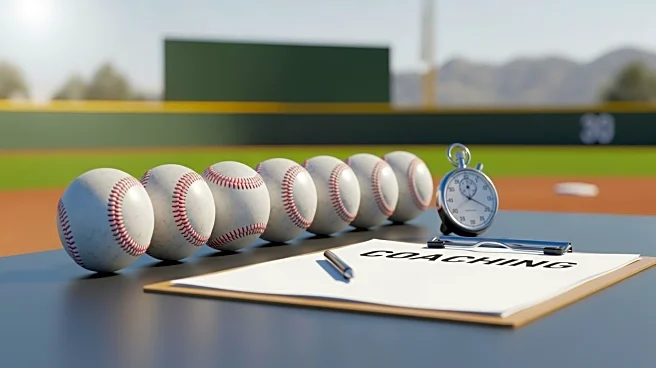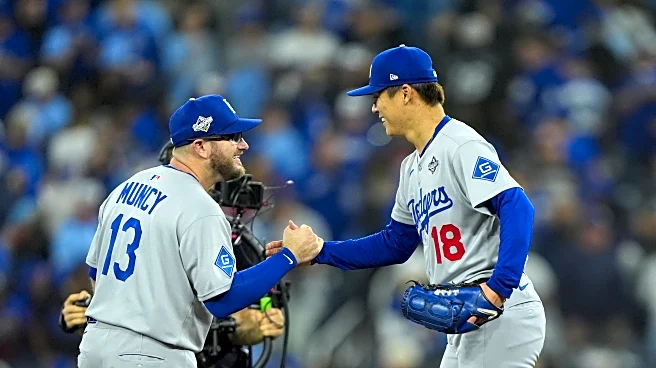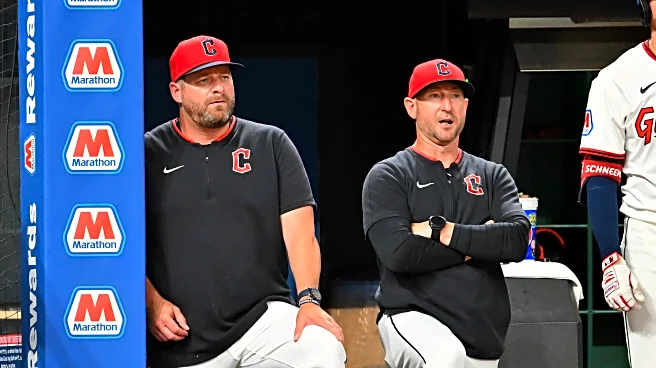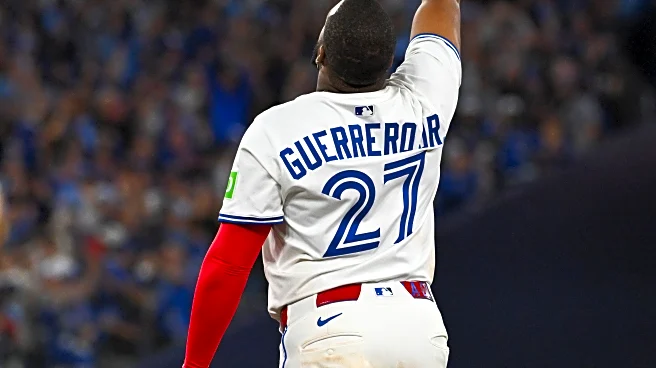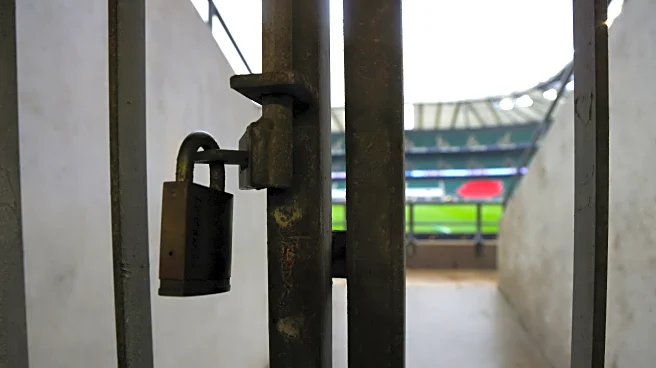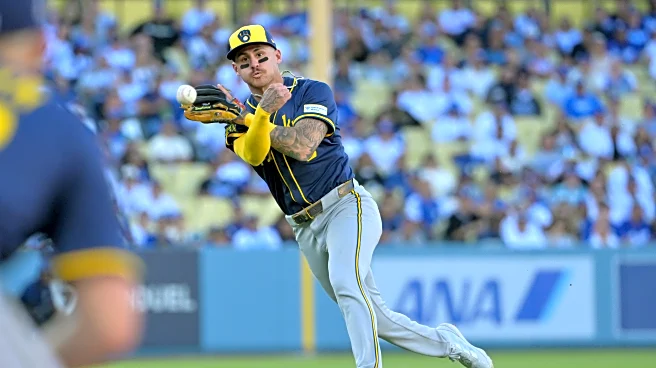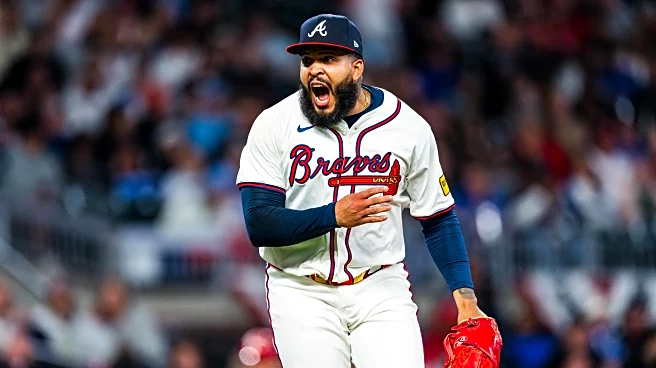I don’t know if I jinxed anything by talking up the Giants’ replacement bullpen that pitched them through August, but let’s stand back and admire the scale at which the whole thing crashed and burned in September.
Their 4.39 ERA was not the worst in the sport (it was merely 20th), nor was their 4.31 FIP (21st); and yet, because the group couldn’t strike anybody out (7.1 K/9 — worst in the sport) and because their expected FIP (xFIP) of 4.56 was third-worst (behind the Nationals and Phillies), Giants relievers amounted to -0.6 fWAR, the worst in the sport.
They were less valuable than the Rockies (0.0), the Nationals (-0.1), the Marlins (-0.5)… the Angels (0.3)! The Twins (0.4)! After emptying out that roster! They were bad, bad, bad. Stinky. And awful. And not good. Brady called it a shambles. Grant Brisbee declared it “not a postseason bullpen,” adding,
Giants relievers have struck out just 16.7 percent of the batters they’ve faced this month, and they were well below the league average in August, too. To put that in perspective, Jose Altuve has struck out in 16.4 percent of his plate appearances this season. The Giants’ bullpen effectively turns their opponents into a high-contact hitter like Altuve. With more balls in play, you get more chaos. It’s better to just strike the batters out, but that’s not the strength of this bullpen.
So, be warned: this final Bullpen Trust Power Rankings for the season (and maybe ever?) isn’t going to go down easy and will have an even worse aftertaste.
Note: because Trevor McDonald wound up moving to the rotation, I’m omitting him from the list, which gives us a nice round 10 to rank.
10. Ryan Walker | August: 1st | Stats: 8 IP, 7.88 ERA, -1.60 WPA
From first to worst? Surely, one dreeeeeeeeeeeeeeeeeeeeeeeeeeeeeeeeeeeadful month can’t drop the sometimes-closer to the bottom of this list… right? Well, I concluded my last ranking with Walker at #1 and this final line: “Is the bullpen actually good? Maybe!” That was because it really looked like Walker had turned a corner with a dominant August. But September was a nuclear blast to his reputation, even if he’s had basically an up and down year that makes it hard to project him for 2026.
Here’s his ERA breakdown by month:
March/April (10.2 IP): 5.91
May (9.2): 3.72
June (12.2): 4.26
July (10.2): 2.53
August (9.2): 0.93
September (8): 7.88
So, is Ryan Walker the reliever who sported a 2.48 ERA (3.02 FIP) through his first 141.1 major league innings pitched in 2023 and 2024 and in June through August of this year had a 2.73 ERA (2.98 FIP) in 33 innings or is he the guy who allowed 18 earned runs in 28.1 innings pitched in March/April, May, and September?
The trust ranking is based on the supposed role: he’s either the closer or the setup option. I think he did enough damage to his reputation this season that his role is now undefined. He did not end the season on a high note in any way and his cratered strikeout rate (just 15%) is beyond alarming.
His crossfire delivery might be a high wear-and-tear gambit that will limit the shelf life of his effectiveness, but that’s a 2027 problem at minimum. The Giants should still be invested in keeping him around just to see if he can get back on track. That he spent half the season basically being a version of the dominant form he presented in 2024 should be encouraging; but, it’s the nature of sports that recency bias carries a lot of weight.
He’ll also be 30 to start the 2026 season, which would be a red flag alone without the flagging nature of his performance in 2025. He accounted for three losses in September. If you want to be real mean about it, those three extra wins would’ve catapulted the Giants into the postseason, over the Mets and Reds, and right into the machine gun fire of the Los Angeles Dodgers for a first round evisceration.
Hmm… on second thought… did Ryan Walker do the Giants a favor?
9. Carson Seymour | August: 10th | Stats: 11.1 IP (6.1 SP), 4.76 ERA, +0.25 WPA
The Giants waited as long as they could to give Carson Seymour some starts and he was a disappointment in a three-start stretch against Baltimore, St. Louis, and Arizona (9.1 IP, 8.68 ERA), that St. Louis start (5 IP 1 ER 2 H) doing all the work to make it look respectable. Subtract those starts from his MLB ledger and he still surrendered 6 home runs in 26.2 IP.
He’s only slightly more trustworthy than Ryan Walker because the ceiling for him was already so low and his flashes of competency has more or less cemented him as the last guy on a pitching staff — at least for the time being. He needs to work on his secondary pitches after his four-seamer (.161 batting average against).
8. Keaton Winn | August: 6th | Stats: 6 IP, 4.50 ERA, -0.01 WPA
I’ll admit that it’s a bit of a coin toss for me for Winn and Tristan Beck, and the main reason why I’ve put him below Beck is simply that playing time and results ought to count for something. Winn has the potential to be a really strong reliever and his peripherals are much better than Beck’s, but because he hasn’t been able to stay on the field much, I must end the season with him here.
Having said that, it seems as though the organization has recognized that the bullpen is their best bet for utilizing his stuff (he was strictly a reliever from July 10th on). Statcast loves his stuff, too.
7. Tristan Beck | August: 9th | Stats: 12.2 IP, 1.42 ERA, +0.43 WPA
Beck doesn’t have Winn’s velocity or stuff, but he does seem to have managed the transition from starter to reliever well enough to get by on cunning and guile. I admire guile, and all that combined with perseverance has made Beck’s comeback from that scary blood clot last Spring Training a defining aspect of his major league career. As a trustworthy figure in a bullpen, though? He’s no Jakob Junis, and he didn’t manage to reach Sean Hjelle’s 2024, either. He is one of the most prominent faces of this Bullpen Without Ks and so it’s difficult to put a lot of trust in someone who relies on getting outs via contact.
September was his season in miniature: a 17.7% strikeout rate, 3 home runs allowed, giving him a 4.99 FIP despite a 2.87 ERA.
6. José Buttó | August: 2nd | Stats: 8.2 IP, 7.27 ERA, -0.32 WPA
The Giants probably hoped that they’d found some sort of stabilizer in the bullpen after ransacking it for trades at the deadline, and while his first month was mostly positive with only some shaky moments, his second month was terrible. His -0.4 fWAR was the worst on staff. For those fans who might remember him at all — because, let’s face it, the ‘pen became fairly anonymized after the deadline and Randy Rodriguez’s injury — An unnamed illness might’ve sapped his sharpness because his stuff hung around even after the Giants acquired him.
5. JT Brubaker | August: n/a | Stats: 8.2 IP, 4.15 ERA, +0.07 WPA
No clearer sign of the bullpen’s generally negative performance than a journeyman reliever getting some September innings to plug holes in the depth chart and being one of the better options. A few weeks ago, I opined that the Giants would probably not tender him a contract for arbitration and my position hasn’t changed. The Giants brought him in to chew up some innings and he basically did, not only in allowing just 1 run in 2 appearances (4.1 IP) against the Dodgers, but also serving as an emergency starter.
4. Matt Gage | August: 3rd | Stats: 7 IP, 7.71 ERA, -0.55 WPA
Erik Miller’s injury status is going to matter a lot in building the bullpen back up to respectability, because the other two lefty options available are effectively the second-best options. Gage’s first 18 appearances (18.1 IP) with the Giants were stellar: a 2.45 ERA / 2.48 FIP with 18 K against 7 walks. His September was either a sign of fatigue or an example of his ceiling: a solid reliever who isn’t someone you want to throw into high leverage spots.
3. Spencer Bivens | August: 8th | Stats: 11.2 IP, 3.09 ERA, +0.60 WPA
As a bailout reliever who can save a bullpen during a blowout, Bivens excels. This final month, though, he managed to include some success in higher leverage situations. His placement on this ranking should not be construed as an endorsement for late inning or higher leverage relief appearances. It is simply recognition that he has been entrusted with a specific — and consistent — role throughout the season and done it well.
2. Joey Lucchesi | August: 5th | Stats: 10.1 IP, 4.35 ERA, +0.42 WPA
Same as Bivens. Lucchesi, similar to Gage, is not the lights out lefty option in the bullpen, but as the second option? He was mostly solid throughout the season, but in the final month of the year, that pedestrian strikeout rate slipped and the walk rate went up — yet, he was entrusted to pitch later in the game and was mostly serviceable in that role. He certainly pitched his way into a degree of trustworthiness and maintained it. The churve churved, with a final batting average against of just .190.
1. Joel Peguero | August: 4th | Stats: 16.1 IP, 3.31 ERA, +0.83 WPA
Did the Giants “find” a guy? It’s nice to think that, but this was Peguero’s age-28 season. He’d already logged 480.2 innings across the minors and foreign leagues, so it’d be a little too fannish to say that the 22.1 innings he threw for the Giants — or the 16.1 he completed in September, which included appearances in the 8th and 9th — were extra special in that they were only as good as they were because of something the Giants did on the development/coaching side.
This was more like the Giants were greatly rewarded by giving another journeyman an opportunity. He also throws 100 mph pretty consistently, so, this isn’t JT Brubaker Redux.
His first appearance against the Dodgers wound up helping the Giants get a rare win against their former rival, but in his followup appearances, The Mighty Bums roughed him up like any old reliever. His September is pretty well split against good teams and bad teams, in a split that sums up not only his month but the strength of the Giants pen if, despite this split, he still wound up as the most trustworthy arm.
Rockies & Cardinals: 7 G 8.2 IP 0 R 4 H 1 BB 8 K
Dbacks & Dodgers: 6 G 7.2 IP 7 R (6 ER) 6 BB 4 K
He has almost certainly pitched his way into being a consideration for the 2026 bullpen, but please don’t mistake a #1 ranking as an endorsement for being the closer going forward.
So, where does this leave the Giants? They went into this season thinking they had enough depth everywhere, when that really wasn’t the case. Of course, every major league season is in part a war of attrition and part a game of reliever roulette, when you never know which pitcher will become unpitchable. This volatile part of the roster can always be improved upon during any team’s offseason, and maybe the Giants had been top heavy for long enough that we fans forgot about how it is mostly a year-round work in progress for most teams.
This final trust ranking had me so shaken that I hope you’ll join me in my anxiety once I break it all down. 26 players pitched an inning of relief for the Giants this season, and I’ve placed them into four tiers, figuring that with a max of 13 pitchers on a major league roster, a maximum of 8 would be relief arms, so 4 tiers divides that nicely. First, though, there are some names to get out of the way:
- Those who will be forgotten forever: Lou Trivino, Scott Alexander.
- Big disappointments: Jordan Hicks, Kyle Harrison, Sean Hjelle, Carson Seymour, Mason Black, Kai-Wei Teng
- Position players: Christian Koss (4 IP 0.0 fWAR), Mike Yastrzemski (1 IP 0.0 fWAR), Logan Porter (1 IP, -0.1 fWAR)
- What do we have here? Hayden Birdsong, Trevor McDonald
The rest of the relievers I’ll place into their appropriate tiers based on their relative talents — at least, as I see it:
TIER 1
This is where Randy Rodriguez would’ve gone and where Tyler Rogers would be if the Giant somehow re-sign him in the offseason.
TIER 2
This is where Camilo Doval would’ve been for most of the season, even when it looked like he regained his form. Otherwise, its sole occupant heading into the offseason is Erik Miller — and even he’s questionable, given injury.
TIER 3
Ryan Walker, Joey Lucchesi, Matt Gage, Spencer Bivens, Keaton Winn, Joel Peguero, Jose Butto. This is probably being unfair to Ryan Walker, who would’ve been a Tier 2 guy as late as September 12th, but he is so shaky that it’s tough to hold him too tightly when it comes to planning. Talented enough to be in a bullpen? Sure. So are the rest of these guys to some degree.
TIER 4
Tristan Beck, JT Brubaker.
Now, am I accusing both of being too bad for a major league bullpen? Not at all. But they are definitely not guys you hold on to when better options present themselves.
I don’t see anybody here whose roster spot is sacrosanct or talent so undeniable that the Giants should try to hold onto him to see if he makes a leap forward. With Randy Rodriguez gone for at least the next couple of seasons (all of 2026 due to surgery, part of 2027 from rehab — though, really, expecting him to jump back as an elite reliever 1.5 years later is foolish), it’s hard to imagine Buster Posey & Zack Minasian seeing this work in progress bullpen as nearing completion.
There’s an argument to be made that every single arm in the Giants bullpen should be replaced this offseason, and hopefully, this final bullpen trust power ranking has made it.
